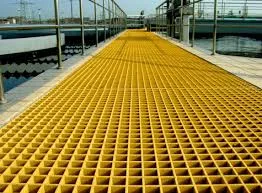
-
 Afrikaans
Afrikaans -
 Albanian
Albanian -
 Amharic
Amharic -
 Arabic
Arabic -
 Armenian
Armenian -
 Azerbaijani
Azerbaijani -
 Basque
Basque -
 Belarusian
Belarusian -
 Bengali
Bengali -
 Bosnian
Bosnian -
 Bulgarian
Bulgarian -
 Catalan
Catalan -
 Cebuano
Cebuano -
 China
China -
 China (Taiwan)
China (Taiwan) -
 Corsican
Corsican -
 Croatian
Croatian -
 Czech
Czech -
 Danish
Danish -
 Dutch
Dutch -
 English
English -
 Esperanto
Esperanto -
 Estonian
Estonian -
 Finnish
Finnish -
 French
French -
 Frisian
Frisian -
 Galician
Galician -
 Georgian
Georgian -
 German
German -
 Greek
Greek -
 Gujarati
Gujarati -
 Haitian Creole
Haitian Creole -
 hausa
hausa -
 hawaiian
hawaiian -
 Hebrew
Hebrew -
 Hindi
Hindi -
 Miao
Miao -
 Hungarian
Hungarian -
 Icelandic
Icelandic -
 igbo
igbo -
 Indonesian
Indonesian -
 irish
irish -
 Italian
Italian -
 Japanese
Japanese -
 Javanese
Javanese -
 Kannada
Kannada -
 kazakh
kazakh -
 Khmer
Khmer -
 Rwandese
Rwandese -
 Korean
Korean -
 Kurdish
Kurdish -
 Kyrgyz
Kyrgyz -
 Lao
Lao -
 Latin
Latin -
 Latvian
Latvian -
 Lithuanian
Lithuanian -
 Luxembourgish
Luxembourgish -
 Macedonian
Macedonian -
 Malgashi
Malgashi -
 Malay
Malay -
 Malayalam
Malayalam -
 Maltese
Maltese -
 Maori
Maori -
 Marathi
Marathi -
 Mongolian
Mongolian -
 Myanmar
Myanmar -
 Nepali
Nepali -
 Norwegian
Norwegian -
 Norwegian
Norwegian -
 Occitan
Occitan -
 Pashto
Pashto -
 Persian
Persian -
 Polish
Polish -
 Portuguese
Portuguese -
 Punjabi
Punjabi -
 Romanian
Romanian -
 Russian
Russian -
 Samoan
Samoan -
 Scottish Gaelic
Scottish Gaelic -
 Serbian
Serbian -
 Sesotho
Sesotho -
 Shona
Shona -
 Sindhi
Sindhi -
 Sinhala
Sinhala -
 Slovak
Slovak -
 Slovenian
Slovenian -
 Somali
Somali -
 Spanish
Spanish -
 Sundanese
Sundanese -
 Swahili
Swahili -
 Swedish
Swedish -
 Tagalog
Tagalog -
 Tajik
Tajik -
 Tamil
Tamil -
 Tatar
Tatar -
 Telugu
Telugu -
 Thai
Thai -
 Turkish
Turkish -
 Turkmen
Turkmen -
 Ukrainian
Ukrainian -
 Urdu
Urdu -
 Uighur
Uighur -
 Uzbek
Uzbek -
 Vietnamese
Vietnamese -
 Welsh
Welsh -
 Bantu
Bantu -
 Yiddish
Yiddish -
 Yoruba
Yoruba -
 Zulu
Zulu
frp customized fittings
Customized Fittings for FRP Enhancing Performance and Versatility
Fiberglass Reinforced Plastic (FRP) has emerged as a preferred material in various industries due to its outstanding strength-to-weight ratio, resistance to corrosion, and versatility. However, to fully harness the potential of FRP, the use of customized fittings is crucial. These fittings not only enhance the performance of FRP systems but also contribute significantly to their adaptability in diverse applications.
Understanding FRP and Its Applications
FRP is composed of a polymer matrix reinforced with fibers, typically glass or carbon. This composite material is widely used in sectors such as construction, automotive, aerospace, and marine due to its ability to withstand harsh environmental conditions and its lightweight nature. In construction, FRP products can be found in reinforcing bars and structural components. In the automotive industry, they contribute to lighter car bodies, thus improving fuel efficiency. Meanwhile, in aerospace, FRP is utilized for its high strength at low weights.
The Importance of Customized Fittings
While FRP materials provide excellent performance, the effectiveness of any application depends significantly on the fittings that connect and integrate various components. Customized FRP fittings are tailored to meet specific project requirements, allowing for improved compatibility and performance. Here are several reasons why customized fittings are essential
1. Precision Fit Standard fittings may not suit every application, especially in complex assemblies. Customized fittings ensure precise dimensions and shapes, leading to enhanced mechanical performance and reducing the risk of leaks or failures.
2. Optimal Material Selection Customized fittings can be designed to be compatible with the particular type of FRP being used, ensuring that the fittings' material properties align with the FRP's characteristics. This improves durability and resistance to environmental factors.
frp customized fittings

3. Enhanced Performance Custom fittings can be designed to accommodate specific load requirements, enhancing the overall stability and performance of the FRP system. Whether it’s handling increased weight loads in construction or reducing drag in aerospace applications, tailored designs lead to optimized performance.
4. Cost-Efficiency While standardized fittings may seem cheaper initially, they can result in higher costs over time due to misfits, failures, or the need for additional alterations. Customized fittings reduce the likelihood of these issues, resulting in better long-term value.
5. Aesthetic Consideration For applications where aesthetics are important—such as consumer products or architectural elements—custom fittings allow for design flexibility. This enables manufacturers to produce visually appealing products without compromising on performance.
Innovation in Customized FRP Fittings
The demand for customized FRP fittings has driven innovation in manufacturing techniques and materials. Advanced technologies like 3D printing and computer-aided design (CAD) are increasingly being employed to create complex geometries and tailor fittings to specific application needs. This not only improves accuracy but also expedites the production process.
Moreover, as sustainability becomes a priority in various industries, customized fittings can be designed with eco-friendly materials or optimized for recyclability. This approach not only meets performance needs but also aligns with global sustainability goals.
Conclusion
In conclusion, the role of customized fittings in FRP applications cannot be understated. They not only improve compatibility and performance but also allow for greater design flexibility and cost-efficiency. As industries continue to evolve and seek more advanced solutions, the demand for innovative and customized FRP fittings will likely grow. Embracing this trend will enable stakeholders to fully leverage the advantages of FRP, driving progress in a myriad of applications while ensuring both performance and sustainability. As we look to the future, the potential for customized FRP fittings appears limitless, promising to enhance the capabilities and applications of this remarkable material.









